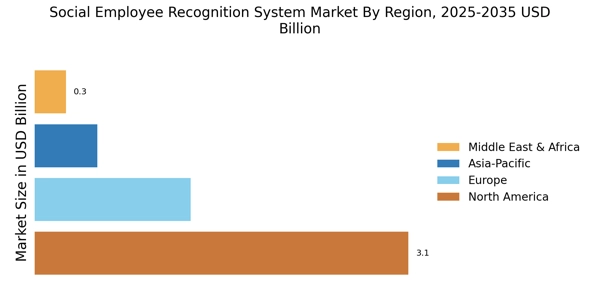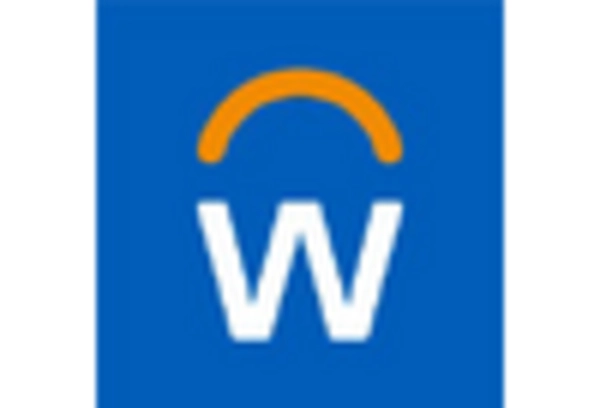Rising Competition for Talent
As competition for talent intensifies, organizations are increasingly leveraging recognition systems to attract and retain top performers. The Social Employee Recognition System Market is experiencing growth as companies recognize that effective recognition strategies can differentiate them in a crowded job market. Research suggests that organizations with strong recognition programs can reduce turnover rates by up to 31%. This competitive advantage is prompting businesses to invest in comprehensive recognition systems that not only acknowledge employee contributions but also enhance their overall experience, thereby fueling growth in the Social Employee Recognition System Market.
Emphasis on Diversity and Inclusion
The emphasis on diversity and inclusion within organizations is reshaping the Social Employee Recognition System Market. Companies are recognizing the importance of creating an inclusive workplace where all employees feel valued and appreciated. This has led to the development of recognition programs that celebrate diverse contributions and promote equity. As organizations strive to enhance their diversity initiatives, the demand for recognition systems that align with these values is likely to increase. This trend not only fosters a sense of belonging but also enhances overall employee satisfaction, thereby driving growth in the Social Employee Recognition System Market.
Integration of Advanced Technologies
The integration of advanced technologies such as artificial intelligence and machine learning is transforming the Social Employee Recognition System Market. These technologies enable organizations to analyze employee performance data more effectively, allowing for tailored recognition programs that resonate with individual employees. As companies increasingly adopt these technologies, the market is projected to grow significantly, with estimates suggesting a compound annual growth rate of over 10% in the coming years. This technological advancement not only streamlines the recognition process but also enhances employee engagement, making it a crucial driver in the Social Employee Recognition System Market.
Shift Towards Remote Work Environments
The shift towards remote work environments has necessitated a reevaluation of employee recognition strategies. In the Social Employee Recognition System Market, organizations are increasingly seeking solutions that cater to remote teams, ensuring that employees feel valued regardless of their physical location. This shift has led to the development of digital recognition platforms that facilitate peer-to-peer recognition and real-time feedback. As remote work continues to be a prevalent model, the demand for innovative recognition solutions is expected to rise, further driving growth in the Social Employee Recognition System Market.
Growing Importance of Employee Engagement
Employee engagement has emerged as a pivotal focus for organizations, driving the demand for effective recognition systems. The Social Employee Recognition System Market is witnessing a surge in interest as companies recognize that engaged employees are more productive and likely to remain with the organization. Research indicates that organizations with robust recognition programs can experience up to 20% higher employee engagement levels. This trend underscores the necessity for businesses to invest in recognition systems that foster a positive workplace culture, thereby propelling growth in the Social Employee Recognition System Market.


















Leave a Comment